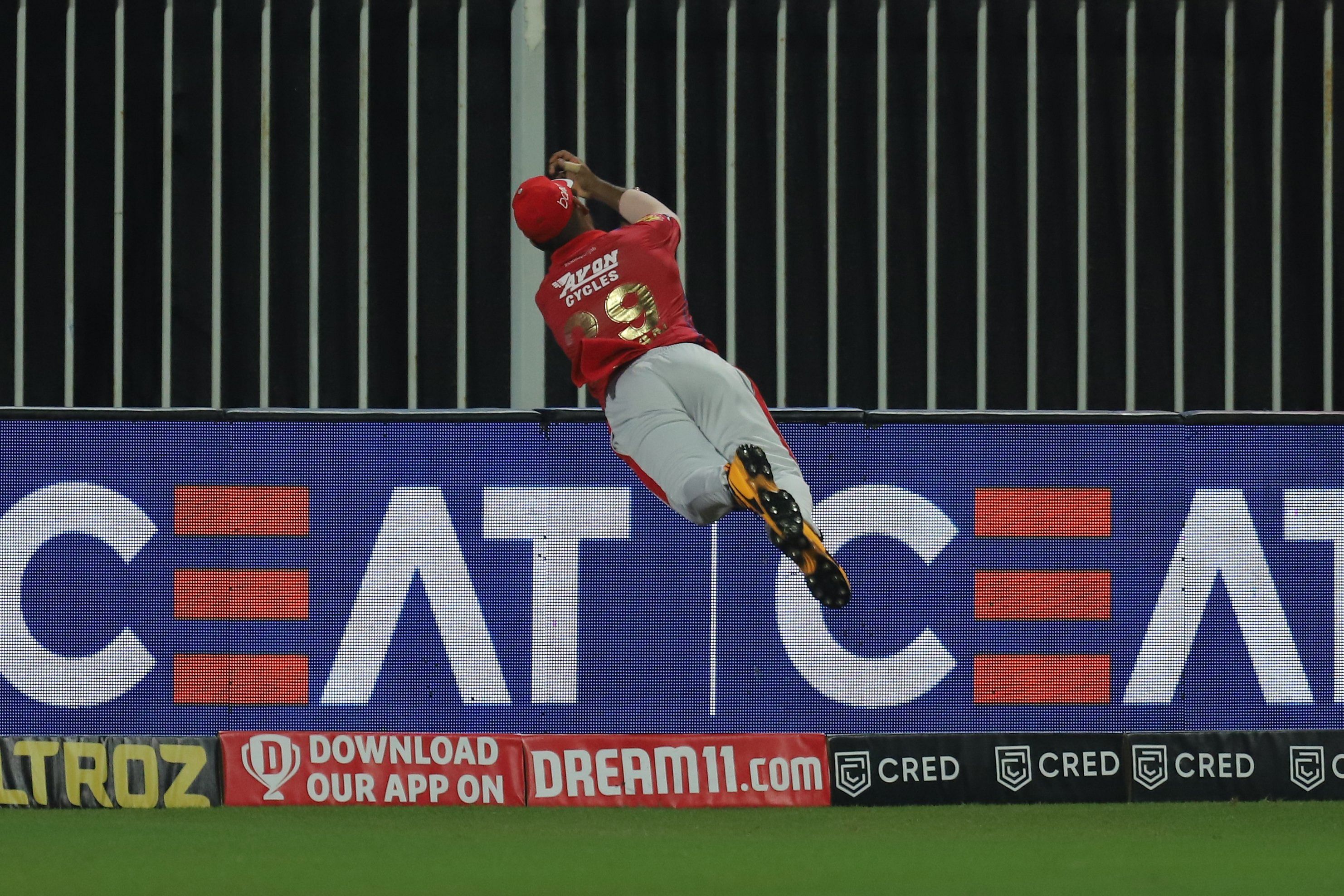
R Sridhar is often easy with praise but the Indian team’s fielding coach seldom dives into a bag of adjectives to describe a fielding effort. ‘Good’ or ‘very good’ usually convey the range of his positive emotions.
Those self-imposed restraints, however, had to be shed to express his take on Nicholas Pooran’s moment of madness/magic in Sharjah a few weeks ago.
The “phenomenal, breathtaking, mind-boggling, fantastic” catch, which eventually ended up as arguably the greatest fielding effort of all time, saved Kings XI Punjab four runs. Sadly, the save, or the sterling batting effort, didn’t amount to much as Punjab went onto watch their massive 224-run target being chase down by a dogged Rajasthan Royals.
Irrespective, no one who consumed the 449-run game forgot about Pooran or the dive that shook social media.
“What Pooran did was a lot more special than usual, he was going chest down outside the rope and was able to hold the ball and throw it back,” Sridhar told DH. “Amazing. Just amazing. It’s brilliant that he had the awareness to throw the ball back into the field of play, but to do it from that scenario was something else, phenomenal.”
It was the eighth over of Rajasthan’s pursuit, and Sanju Samson pulled a not-so-full delivery from M Ashwin over (seemingly) mid-wicket in the third delivery of the eighth over. Not the greatest shot, but the boundaries are small, and Pooran didn’t look like he was going to get a hand to it, let alone get it.
Relaxed still, Pooran tilted his body to his left, positioned his left foot inches from the ropes, and took off. Predicting the path of the ball, he dived full length and got the ball to sit in the palm of his left hand. As his torso twisted and gravity began to do its thing, he flicked the ball with the same hand - all while in the air - before landing on his chest over the ropes. Four runs saved, he let out a coy smile and resumed play.
Commentators, Kevin Pietersen included, weren’t exactly sure what happened at first, but replays forced even the games greats to call it the greatest fielding effort of all time. Social media followed suit. Even Punjab’s fielding coach, a bona fide legend in the art of fielding, Jonty Rhodes jumped out of his seat and bowed in respect.
It’s not the first time such a piece of acrobatic save has been on display. Samson himself had pulled off such a trick not once but twice - once for Delhi Daredevils and another time for India in a T20I against New Zealand.
“Every team trains for these catches, they have become essentials,” explains Sridhar when asked about how you train for such a moment. “Awareness comes with repetition. Some get it better than the others but it’s something that needs to be trained and worked on. You need to be explosive to be able to take those catches, you need a solid base. Cricket is all about peak explosive power. But to roll like that in the air and take a catch is something else.”
Abhay Sharma, the current Under-19 and India A coach, said he has put his players through boundary-catching drills for close to a decade. “I began working on boundary catching like this years ago. I think it’s something all coaches do nowadays,” he explains. “The most important thing is to have great peripheral awareness. It obviously takes a lot of hard work to understand that and get into positions accordingly.”
Pooh-poohing the notion that it’s only about athleticism, Abhay says: “I don’t think this has anything to do with athleticism, at least not entirely. I know of a lot of athletes who are very fit but they won’t have awareness. That’s what it takes to be a good boundary rope fielder. You can be fast in a straight line, but if you aren’t moving well laterally and aren’t aware, you will not take those catches. You also need a lot of balance, stability and patience to complete those catches.”
Even former India strength and conditioning coach Ramji Srinivasan, who has dedicated his life to bio-mechanics, was in awe of Pooran’s effort. “One needs to have an enormous level of focus, an acute judgement of the trajectory of the ball, the dip and other parameters to take that catch. You also need to be mindful to ignore signboards. It happens through sheer reflex. It comes down to neuro-muscular co-ordination and how well you train that finer aspect of the game.”
Ramji felt the beginning of this relaying trend began in 2010 during the Champions League with Pollard. “Optical reflex plays a big role in cricket and your peripheral awareness needs to be very good for you to be a good cricketer. It’s something you can train, but these are the finer aspects of training and not like lifting weights and getting stronger,” he explains.
Ramji elucidates further: “Neuro-muscular pathways are laid when you’re young. Which is why it’s important to pursue all kinds of sports when you’re younger. Cricket, like most sports, is about hand-eye co-ordination so the moment cricketers, batsmen especially, lose their reflexes they’re done. But they can develop these pathways even later on life by doing specialised exercises. ‘Reflex’ has to become a part of you. There is no logic in reflex. You only think after. If you intellectualise it, it’s gone.”
One way to make it better, Ramji insists, is if you are in a relaxed state and focused on doing what you love. “It’s scientifically proven that you do better with your reflexes when you’re in a ‘happier’ state of mind, a flow state. Basically, enjoy the game and you will see the ball better (laughs).”